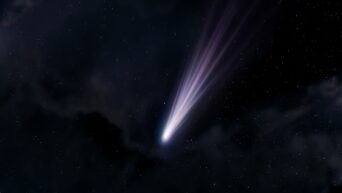Discovering the Mysteries of Our Planet’s Birth – Baffin Island’s Clues to Earth’s Core
In a monumental scientific breakthrough, a team of researchers led by Forrest Horton, an associate scientist in the Department of Geology and Geophysics at the Woods Hole Oceanographic Institution, has detected a surprising abundance of helium-3 in volcanic rocks on Canada’s Baffin Island. This finding provides compelling evidence supporting the long-standing hypothesis that this rare variant of helium is leaking from Earth’s core and has been doing so for millennia. The results of their research have been published in the prestigious journal Nature.
Helium-3 (3He) is a scarce isotope of helium, primarily found in outer space, contrasting with helium-4 (4He), which is abundant on Earth. The scarcity of helium-3 on our planet can be attributed to its lack of significant production or addition, causing its loss to space over geological time. As the Earth’s rocky layers move and convect, they give rise to the ascending, cooling, and sinking of materials, ultimately leading to helium loss to the atmosphere and beyond.
Understanding the presence of elements escaping from the Earth’s core is crucial in unraveling the mysteries of our planet’s formation and evolution. Baffin Island, situated in the territory of Nunavut, Canada, played a pivotal role in this groundbreaking discovery. The island’s volcanic rocks contain an unexpectedly high ratio of helium-3 to helium-4, first identified by Solveigh Lass-Evans in 2003 as part of her doctoral studies under the supervision of University of Edinburgh scientist Finlay Stuart.
Horton and his team, in their research expedition in 2018, explored the rocks formed millions of years ago during the separation of Greenland and North America. Their goal was to delve into the compositions locked within Earth’s core and mantle, located beneath the surface.
The results astonished the scientific community as the Arctic rocks displayed helium-3 and helium-4 measurements higher than previously reported, with variations among the samples collected. The team found approximately 10 million helium-3 atoms per gram of olivine crystals, a mineral rich in bright green olivine, also known as the gemstone peridot.
Only about one helium-3 atom exists for every million helium-4 atoms on Earth, highlighting the rarity of this isotope. The researchers’ high measurements suggest that gases inherited from the solar nebula during the formation of the solar system have been better preserved in Earth than previously assumed.
The journey of helium-3 in the Earth’s rocks begins with the formation of the solar system, where it inherited helium from the solar nebula. As the Earth was born within this nebula 4.5 billion years ago, helium-3 became trapped in its core. Over time, this noble gas seeped from the core, ascended through the mantle, and eventually erupted on Baffin Island in the form of magma plumes.
“There Appears to Be a Slow Leak in Earth's Core, Scientists Say”
There is so much more to this on a solar system event scale.
Article: https://t.co/yGS8HyDzOH
— Brian Roemmele (@BrianRoemmele) October 25, 2023
The rocks studied by Horton’s team are approximately 60 million years old, and the escape of helium from the core likely occurred hundreds of millions of years ago. However, the exact timeline remains uncertain.
It’s important to note that the leakage of helium-3 from Earth’s core has no adverse impact on our planet or the environment since helium-3 does not chemically react with matter.
Horton and his colleagues are not stopping at helium-3. Their next mission is to investigate whether the Earth’s core contains other light elements, potentially explaining why the outer core is less dense than anticipated. This research has the potential to revolutionize our understanding of planetary evolution and habitability.
“The scientific treasures uncovered on Baffin Island have opened a new chapter in our quest to understand Earth’s origins and its composition. We look forward to future discoveries that may connect helium-3 with other essential elements,” said Horton.
This groundbreaking research further illuminates the fascinating story of our planet’s formation and evolution. As scientists delve deeper into Earth’s core and the mysteries of the universe, we can expect even more awe-inspiring revelations.

































